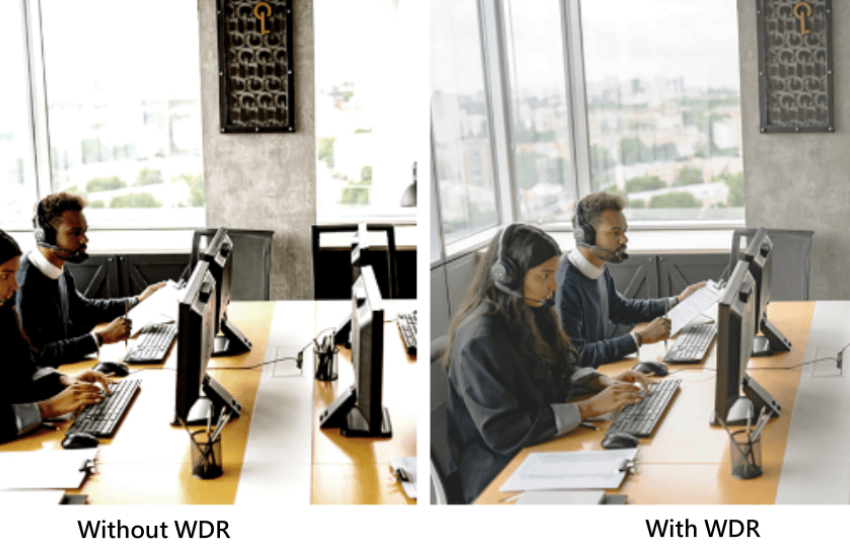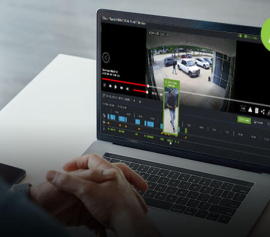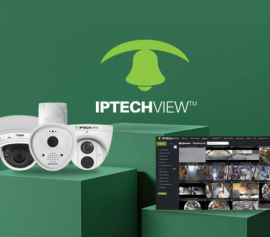Key to Clear Security Footage: What Is WDR on a Camera

We are all very familiar with security camera footage that appear washed out or too dark. Thus making it difficult to see details? This happens because of the camera's dynamic range.
The dynamic range is the balance between light and dark areas in an image. That's where wide dynamic range (WDR) technology comes into play.
WDR allows cameras to handle high-contrast lighting conditions. Therefore, it ensures that important details are visible no matter the lighting. Let's explore how WDR is transforming the world of security surveillance.
Description of WDR
Dynamic range is the difference between the brightest and darkest parts a camera can capture. In video surveillance, this means how well a camera handles light and dark areas in the same shot. Wide Dynamic Range (WDR) technology helps balance these extremes, so bright spots aren’t too bright, and dark spots aren’t too dark, keeping every detail clear.
Dynamic range is defined by the ratio between the highest and lowest measurable values. The dynamic range is measured by the contrast ratio between the darkest and brightest color tones captured with a single exposure. The purpose of WDR is to avoid overexposure or underexposure.

A camera's dynamic range is measured in decibels (dB). The industry benchmark set by IHS Markit is a range of 60 dB or more. Anyway, it is not a rare event to find WDR cameras containing the dynamic range 120 dB or greater.
There is a stark difference if we compare the two images below. A side-by-side comparison allows us to notice that without WDR, the camera image is underexposed because it is placed against the light. The lighting not being in favor leaves the interior way too dark. So much so, that we can't even recognize faces. With WDR enabled, both the outdoor scenery and the details of the conference room are visible. This is how WDR balances out exposure— by providing better low-light imaging and backlight compensation.
How Does WDR Work?
WDR technology has two processors:
- Light Image Processor
- Dark Image Processor
We achieve a high quality image by combining the two. With WDR installed, one PoE IP camera lens allows more light where it is needed and less light in brighter areas. This process is implemented through different shutter speeds. When the sensor is exposed to light from outside, it automatically controls it to acquire a balance.
- For lighter areas, the shutter speed is sped up so the sensor is exposed to minimum light.
- For darker areas, the shutter speed is significantly lower so the sensor can capture more light.
- By combining the two images, the final product we receive is of a much higher resolution.
How HDR Compares to WDR
WDR and HDR are two completely different processing techniques. The former being hardware and the latter being software. When talking about these two together, people often make a mistake by comparing them against each other. Because why not have the best of both worlds and install them together!
Anyway, the purpose of WDR and HDR is literally the same, that is, to prevent polarization and keep a balance. The main difference lies in their implementation. WDR is more commonly used in security cameras while HDR is often used in photography or cinematography.
Even though HDR has so many upsides, it falls behind WDR when it comes to high-speed DSP. Because of the high-speed DSP feature, WDR can deal well with dynamic images.
Here's a list of shortcomings why we recommend WDR technology over HDR for security cameras:
- High-Speed Processing: With high-speed DSP support, WDR can deal pretty well with dynamic photos or videos.
- Backlight Compensation: WDR enables imaging systems to overcome intense backlighting, making it easier to distinguish features and shapes on subjects despite challenging lighting conditions.
- Better Low-Light Imaging: WDR technology allows images to be captured in dark environments and enhances illumination, ensuring security even in low or no-power conditions.
- Adjustable Exposure: WDR can produce a set of two or four frames with varying exposure times, and the gain can be adjusted individually for each frame along with the exposure time.
- Cost Effective: A WDR camera is more cost-effective in terms of installation and purchase price compared to an HDR camera.
Where to Put WDR Cameras?
WDR cameras are commonly used in places with bad lighting. By bad lighting we mean places where there's a high contrast between bright and dark areas. Places where viewing details with a regular camera is almost impossible.
Entrance
WDR cameras are most commonly used to monitor building entrances. Whether it's a store, bank, ATM, transportation hub, restaurant, or hospital— these entrances often let in bright light compared to the interior. WDR cameras can balance overly bright or dark areas, delivering clear snapshots or videos.
Garage
In high-contrast scenes, like a car entering a dark garage with bright headlights, a WDR camera can capture license plates more clearly.
Outdoor
As the sun shifts position throughout the day, outdoor surveillance cameras often face strong sunlight and contrasting shadows. WDR cameras can compensate for these differences, providing clear images.
Window Side
When sunlight pours through windows, creating harsh contrasts between bright and dark areas, WDR cameras adjust to balance the intense outdoor light with the softer indoor light. This way, you get a clear view of everything, from people’s faces by the window to the curtains fluttering in the breeze.
End Note
In security settings, WDR is very important because of its ability to provide clear footage. Experts suggest using WDR when combating environments with challenging lightning like entrances, backyard, footpath etc.
All in all, WDR is so popular in surveillance because it helps achieve relatively more uniform lighting that helps determine all the important details in footage.






